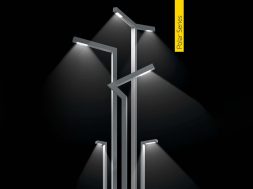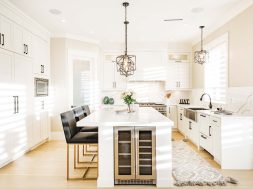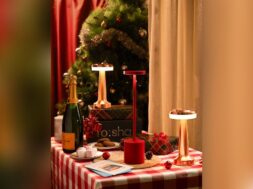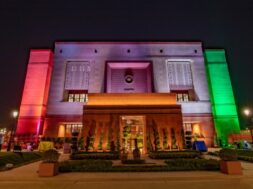
Ar. Arjun Rathi speaks on diverse interior and decor trends along with the launch of his flagship design gallery in Chembur, Mumbai.

Which interior and decor trends are currently prevalent in urban India?
Generally speaking, interior design is very diverse in India. For example, talking with a client in Bombay, their modern design style is very different from a client in Delhi, similar to Calcutta and Hyderabad; every region has their design style. This is the best part of working in a country like India, where no two areas are the same and no two clients are the same. Having the opportunity to work across all the different regions and study other trends makes it fun for me. In addition, a trend that works in Delhi doesn’t necessarily need to be copied in Bombay.
The whole design universe has become so diverse that these tier two cities have become micro universes of their own. One thing I’ve seen over here and in design is that it differs regionally, like many of the trends people tend to like vary regionally.
Also, it depends on how well the client is exposed and how well the client has travelled. For example, many clients travel overseas, look at properties like bars or restaurants, and then apply that design to their houses. By changing the finish, color, or any material, we can go from a classical house to a modern house to a contemporary house to a minimalist one. I think that’s how we reacted to this little bit of a diverse trend universe, as you would like to call it.
Interior design is all about curating comfort; according to you, what is a “good” design?
As a lighting designer, after doing a lot of architecture and interiors, I’ve taken a step back in judging the design, as I always want to ensure that the clients and the architect both are happy. This is a very successful design, which means it meets the client’s requirements, is functional, and matches the client’s aesthetic expectations.
As an external consultant, doing lighting or giving decorative products, I complement or enhance the space. Realizing this as a two way process of studying client behavior or client mentality on what good design is for them. Many a times client design my lights in a very different way, which I would never have imagined. I recently designed my Shikara light with one concept in mind, but the client used it very differently.
The notion of beauty is often derogatory. It is often confined to how pleasing it seems to your senses, especially sight. How do you take both aesthetics and functionality along?
Taking aesthetics and functionality into account with our products, we’ve studied over 600 projects across the country in the last ten years. We’ve designed lighting for living rooms, dining rooms, work areas, bedrooms, and bathrooms. Over the years, I have realized there are so many different living formats and that certain forms of lighting are expandable, like modular lighting systems.
In addition to being flexible, our products are aesthetically flexible, and we can change the finish and apply them to
different interior styles. And the core elements that produce the product, such as glass, ceramics, or leather, truly bring the look and aesthetic out, either complementing or contrasting with the space. That is how we have designed a lot of our products.

Could you tell us something about Arjun Rathi Design Studio?
We are a Mumbai-based lighting design studio. In addition to lighting design, we have also started a parallel company called rural modern glass studio, which produces hand-blown glass. We’ve been exploring lighting design for the past ten years, inspired by architecture and design, by studying people’s lives and incorporating that into our work. A lot of our earlier work for blown glass was imported from Europe and China. Having set up our studio, we now have access to international quality glass and glass art, which we want to incorporate into our work.
Recently, we had a tenure celebration, where we showcased our last ten years of design. For the next decade, we will explore art glass into lighting. The way that we incorporate that art glass into lighting will be fascinating for us. Additionally, since we have an architectural background, large-scale installations are easy. Last year, we completed India’s tallest chandelier, 44 feet high, for a client’s house. Since we come from an architecture background, we bring a structured approach to a project that is extremely helpful when doing such large-scale projects.
Could you walk our readers through the launch of your flagship design gallery in Chembur, Mumbai?
This lighting gallery is something like a studio space turned into a gallery so that we’ll always be displaying some of our latest collections and older popular designs, where clients can see the finishes and the products. The second half of the space will be a mock studio-style space, where we will be doing large installations and the Glass Studios
in the next Gala. So clients can see the ongoing progress, some of our finished works and blown glass. So the whole experience becomes very powerful for them.

Please elaborate more on your latest collections like Sugar, Bauhaus etc.
Starting with the Bauhaus collection, it was actually made around 2019 or so. Bauhaus was our first industrially mass- produced collection. Essentially, Bauhaus is an architecture movement founded in the 1920s by Walter Gropius through his College to bring artisans and factories together to produce designer products. That’s what we did with our Bauhaus collection, where we worked with factories that do a lot of OEM metal work.
From the metal work, all our glass was hand blown, but also industrially produced hand blown glass. The Bauhaus collection is created in true Bauhaus fashion by combining the two. The sugar collection is the future for our studio, which is just a scratch of what we will do with art glass in the future. Seeing many of the lighting and furniture collections that have come out of India, none of them has a lot of pop.
We wanted to do something very pop and fun, inspired by Indian food. No substantial element in India connects emotionally with people than food. So we did a very detailed study of Indian desserts. From these Indian desserts, we picked about five desserts that we liked, including the bulls-eye candy with stripes, which became the series’ signature. After that, we took out the orange Pan Pasand and all the Indian candies, which were solid colours and which could be used to create an ombre glass Then we took out the pan, which is a powerful sign of the Indian desert, which differs from region to region.
Cookie Consent
We use cookies to personalize your experience. By continuing to visit this website you agree to our Terms & Conditions, Privacy Policy and Cookie Policy.









